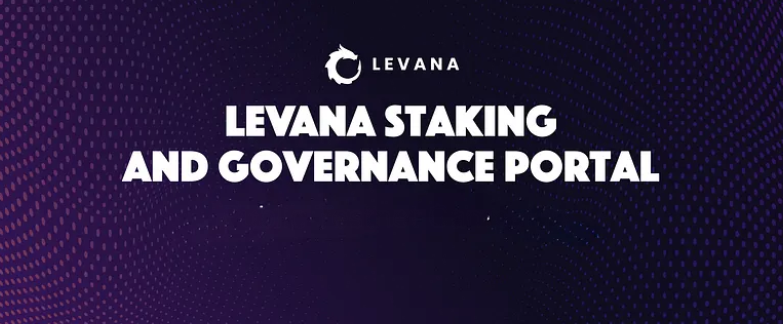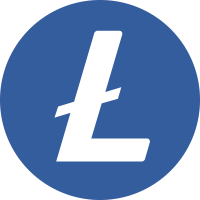Introducing the Levana Staking and Governance Portal
The launch of the Levana Governance Portal marks the next step in the progressive decentralization of Levana.
Made possible by the LVN token — the newly launched Governance Portal allows the community of LVN holders to actively shape the direction of Levana through the Levana DAO.
The Levana DAO will consist of LVN stakers, and the staking system has been carefully created to reward those who commit to the ecosystem with a longer time preference.
The staking rewards have been designed to offer a positive feedback loop to the community. The DAO will eventually be responsible for the operations and direction of the platform. Staking rewards are drawn from the project’s treasury, used to fund Levana’s growth via other expenditures, such as R&D and grants. The treasury is funded by fees collected from use of the Levana protocol. Governance participants will therefore be entrusted with determining the allocation of funds, and be incentivized to make decisions with the aim of growing the volume generated by Levana, resulting in a larger treasury for them to allocate.
Overview of the Levana Staking and Governance Portal
Staking LVN
The LVN staking system works very similarly to opening a trade on Levana.
You choose the amount of LVN you want to stake, you choose the length of time you want to lock it for with greater reward boosts given for those that commit to staking over a longer time frame, and then you sign the transaction.
It’s as easy as that!
Note: You must be staking BEFORE a proposal goes live in order to be able to vote on it! If you stake after the proposal was created, you cannot vote on it, and you will not be eligible to receive any rewards from the proposal.
Staked LVN is subject to a 45 day unbonding period before withdrawal, during which the unbonding LVN is not eligible for staking rewards or to participate in governance.
Boosted Rewards
As shown in this screenshot, similarly to how you can enter at different levels when opening a trade, you can lock your LVN for varying periods of time.
You do not need to lock all your LVN at once or for the same amount of time. Once a certain amount of your LVN is locked, you can always boost them to a higher tier to receive higher staking rewards with increased voting power. This offers the opportunity for LVN holders to explore interesting yield strategies with different risk profiles and time horizons.
The staking system has been carefully designed to reward those who commit to maintaining Levana through Staking and Governance, with the multiplier system designed to incentivise the commitment over a longer timeframe — to the benefit of both the user and the protocol.
Claiming Rewards
The reward interface is simple and clean. The page will show the rewards that are ready to be claimed. Smart contracts execute all the reward actions.
Vesting LVN will have governance influence through the DAO but, by default, will not be eligible for staking rewards which will mean the rewards are concentrated for those who matter most, our community.
The Levana DAO Governance Structure is designed to address one of the issues facing many staking systems today. Team, investor and advisor staking rewards act as a hidden tax on an ecosystem without providing any value to the community. Vesting LVN don’t receive staking rewards by default. This holds true for tokens locked from genesis, including those which are allocated to the team, advisors and investors.
Where do Staking Rewards come from?
Rewards on Levana are generated from real yield collected by the platform, paid in the tokens of the respective markets combined with LVN released to the Levana DAO from Community Pool unlocks.
Everything Levana builds is with a long term time preference, to create the most dynamic and robust environment for users to leverage any asset.
With the launch of the Staking and Governance Portal, we will be using vesting LVN from the Community Pool to top up the DAO treasury, targeting boosting staking APR to ~20%.
This is in line with the aim of using the Community Pool to encourage active community involvement, and distribute the LVN token to our active and potential community.
Vesting LVN is not immediately liquid and will be unlocked over a predefined time period.
Platform Fees: How will they be used?
To date, Levana has had $2.8bn of trading volume and collected over $3.6m of fees that have been paid to traders, liquidity providers and the Foundation.
Fees come in many forms on Levana:
- Trading Fees — 70% go to LPs, 30% to the Foundation
- Funding Rate — Currently 100% to long and short traders
- Crank Fees — varies between markets, but roughly 10% to the Foundation, 90% to Crank operators
- Delta Neutrality Fees — Varies between markets, roughly 70% to LPs, 30% to the Foundation
- Borrow Fees — 70% to LPs, 30% to the Foundation
To date, the majority of fees (currently excluding funding rate fees and crank fees) are collected and distributed 70% to LPs and 30% to the Levana Foundation. Funding rate fees are currently paid 100% directly between long and short traders, with a 30% tax currently disabled to help balance the markets.
With the launch of the Staking and Governance Portal, a portion of Foundation fees will be allocated to the Levana DAO, with a gradually higher percentage allocated as platform fees and revenue grow.
The overheads of the Foundation will be capped beyond a certain level and more of the upside will be captured by the DAO and stakers with increased platform growth.
Total Platform Fee Allocation:
Of the 30% allocated to the Foundation:
Starting from launch of the DAO in July 2024, the Levana DAO will initially collect ~10% of the Foundation Fees which represents ~3% of total platform fees. This is intended to increase >10x over time.
There will be set up initially internal accounting for Market Liquidity, Operations and Insurance, and this will move on chain for transparency over time.
DAO Utilization of Funds
The Levana DAO can vote on how to distribute the amounts allocated to the DAO as they see fit.
As the platform grows and the absolute total of revenue increases beyond predefined thresholds, the DAO will gradually receive proportionally more of the fees generated by the protocol, with the eventual aim of transitioning to a completely decentralized and community-driven model.
It is important to remain concentrated on continued platform development and growth until certain thresholds are passed to ensure Levana’s stability before transitioning to an entirely decentralized model, as it is the growth of the platform in terms of volume itself that makes the decentralized model attractive and worthwhile to become a part of.
More details will be published on the expansion of Foundation fees to the DAO in an upcoming LVN Tokenomics post.
How does Governance work?
Consisting of all LVN stakers, the Levana DAO will gradually and progressively assume more responsibility for Levana.
As mentioned, governance is closely aligned with staking, as what makes staking worthwhile, is a well-run platform that is generating volume and paying staking rewards.
The Levana DAO can directly influence the factors that dictate growth and activity by allocating the treasury or adjusting platform variables. This creates a positive feedback loop between staking and governance.
Creating and Voting on Proposals
Video of the first Levana Governance Proposal in action
Initially, stakers will be able to both create and vote on proposals through the Governance Portal, with future functionality including advanced analytics about governance and enhancing the user experience planned, to make governance more integrated and intuitive.
Initially, LVN stakers will be able to create 3 types of DAO proposals:
- Distribution: Initiate a proportional distribution based on staked LVN, with boosted pro-rata rights. Distribution can happen with any token held in the Levana DAO treasury. In the case of LVN distributions, the proposal can specify how long the LVN will be vesting (default of 26 weeks) and can determine if the vesting LVN, when staked, will have voting rights, reward rights or both.
- Address: Initiate a transfer to a specific address for a specific purpose such as commissioning marketing activities or providing liquidity to a new market.
- Text: These proposals have no direct interaction with the Levana DAO smart contracts. The results of these proposals act as a signal of intent from the community. The results of text proposals are non-binding, but rather will act as a voice of the community to demonstrate sentiment and opinion.
Conclusion
The launch of our Staking and Governance Portal is a significant milestone in Levana’s journey to progressive decentralization and community governance.
Our goal is to create a self-sustaining and user-centric trading ecosystem on foundations that are built to last the test of time. The Staking and Governance Portal, and by extension, the LVN token, are positioned to play a pivotal role in this evolution and growth.
Where can I find the LVN token?
You can find the LVN token on all popular DEXs on Injective & Osmosis.
About Levana
Levana is a fully-collateralized perpetual swap platform that allows users on Cosmos to leverage any asset.
With Levana, any asset can be traded with customizable leverage, including crypto, liquid staking tokens, commodities and forex, with additional opportunities to earn by providing liquidity to markets.
Try Levana and start trading native assets on-chain today.
Join our Discord community to discuss and shape the future of Levana.
 English
English
 Deutsch
Deutsch
 Español
Español
 Français
Français
 Português
Português
 日本
日本
 한국인
한국인
 Türkçe
Türkçe
 Русский
Русский
 Tiếng Việt
Tiếng Việt














